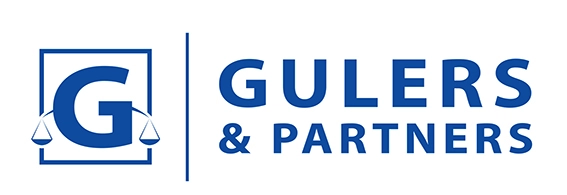New Regulation on Cosmetic Products has been Published
With the new Regulation on Cosmetic Products (“Regulation“) published in the Official Gazette dated 08.05.2023 and numbered 32184, the previous regulation was repealed. In this way, the procedures and principles regarding the cosmetic products available on the market have been determined again in general and harmonized with the Cosmetics Regulation of the European Parliament and of the Council. The changes made within the scope of compliance are summarized below;
- The actors responsible for cosmetic products are defined. The Responsible Person, importer, manufacturer and distributor, which are also included in the EU Cosmetics Regulation, have been added to the Regulation.
- The requirements for Carcinogenic/Mutagenic and Reproductive Toxic ingredients that may be contained in cosmetic products have been determined.
- The educational status of the persons who will prepare the Product Safety Assessment Report, which is mandatory before the launch of cosmetic products, has been changed and harmonized with EU.
In addition, the free sale certificate for cosmetic products was added to the regulation, providing support for exports and the national data system (ÜTS) for the notification of cosmetic products was defined.
- The prominent regulations, amendments and harmonized issues in the Regulation are as follows:The definition of “cosmetic product” in the repealed Cosmetics Regulation published in the Official Gazette dated 23.05.2005 and numbered 25823 (“Abrogated Regulation“) has not been amended in the Regulation.
- Compared to the abrogated Regulation, the Regulation includes several new definitions. The most prominent of these are;
1. Framework Formulation; Formulation listing the category or function of the ingredients and their maximum concentration in the cosmetic product or, when not expressed or partially expressed by such a formulation, the formulation giving quantitative and qualitative information of the cosmetic product concerned.
2. Distributor; A natural or legal person other than the manufacturer or importer who has a cosmetic product on the market by taking part in the supply chain.
3. Manufacturer; A natural or legal person who manufactures a cosmetic product or has the product designed or manufactured and places it on the market under its own name or trademark.
4. Economic Operator; Manufacturer, responsible person, importer and distributor
5. National Electronic Database; Electronic database managed by TİTCK.
- “Responsible Person” is one of the new expressions included in the Regulation, which is not defined. For domestically manufactured cosmetic products, if the manufacturer is a resident, the responsible person is the manufacturer; if the manufacturer is a non-resident, a resident is authorized by written agreement and appointed as the responsible person.
- The responsible person for imported cosmetic products is the importer. However, the importer may appoint a resident person as the responsible person by authorizing him/her with a written agreement. If the responsible person is a natural or legal person appointed by the manufacturer or importer by written agreement, the responsible person shall be responsible on the same basis as the manufacturer or importer.
- If a distributor places a cosmetic product on the market under its own name or trademark or makes a change to a cosmetic product already placed on the market that may affect its compliance with the applicable requirements, it becomes the responsible person and the distributor is legally liable on the same basis as the manufacturer.
- Within the scope of the obligation, responsible persons shall immediately take the necessary corrective measures to bring a cosmetic product into conformity, withdraw it from the market or recall it if they assess or have reason to believe that a cosmetic product placed on the market does not comply with the Regulation. Where the cosmetic product poses a risk to human health, the responsible persons shall immediately inform the Authority, in particular about the nonconformity and any corrective action taken.
- There are also a number of notifications that the Responsible Person must provide before a cosmetic product is placed on the market. These are;
1. The barcode of the product and the category and name of the cosmetic product in Annex IX, which enables the specific identification of the cosmetic product.
2. Name and address of the person responsible, product origin for imported products.
3. The existence of substances in the form of nanomaterials and the identification and reasonably foreseeable exposure conditions of these substances, including their chemical names (IUPAC) and other identifiers in Article 2 of Annex I/A.
4. The name and CAS or EC number of the substances used in cosmetic products, including substances classified as carcinogenic, mutagenic or toxic for reproduction in accordance with the regulation dated 11/12/2013 and biserial number 28848.
5. The formulation of volume or quantity ratios, including the frame formulation, in the form of ranges.
- The responsible technical staff is another newly added actor. According to the Regulation, the responsible technical officer is employed by the Responsible Person mentioned above and is responsible for the control of the compliance of the product to be placed on the market with the cosmetics legislation, good manufacturing practices and other relevant legislation. Chemists, biochemists, chemical engineers, biomedical engineers, biologists, microbiologists and pharmacists may be employed as responsible technical personnel, but if the Responsible Person has one of the qualifications mentioned above, the Responsible Person may assume the role of responsible technical personnel.
- Again, with the issue of “free circulation”, which is a new concept added to the cosmetics legislation with the Regulation, it is stated in the Regulation as follows: “The TİTCK avoids practices that restrict, prohibit or deny the placing of cosmetic products that comply with the Regulation on the market.” In case a free circulation certificate is requested for domestically manufactured cosmetic products, the responsible person will need to apply through the electronic database – the electronic database managed by the TİTCK.
You may reach the Regulation through link.
Tagged with: Moroğlu Arseven, Yonca Çelebi, Life Sciences, Healthcare



















































 Successful
Successful